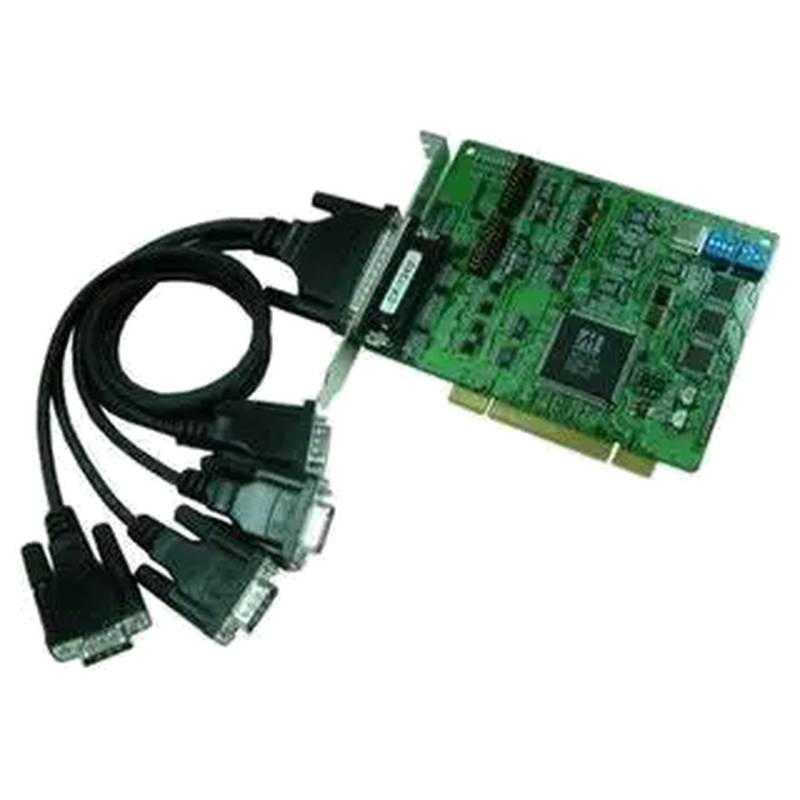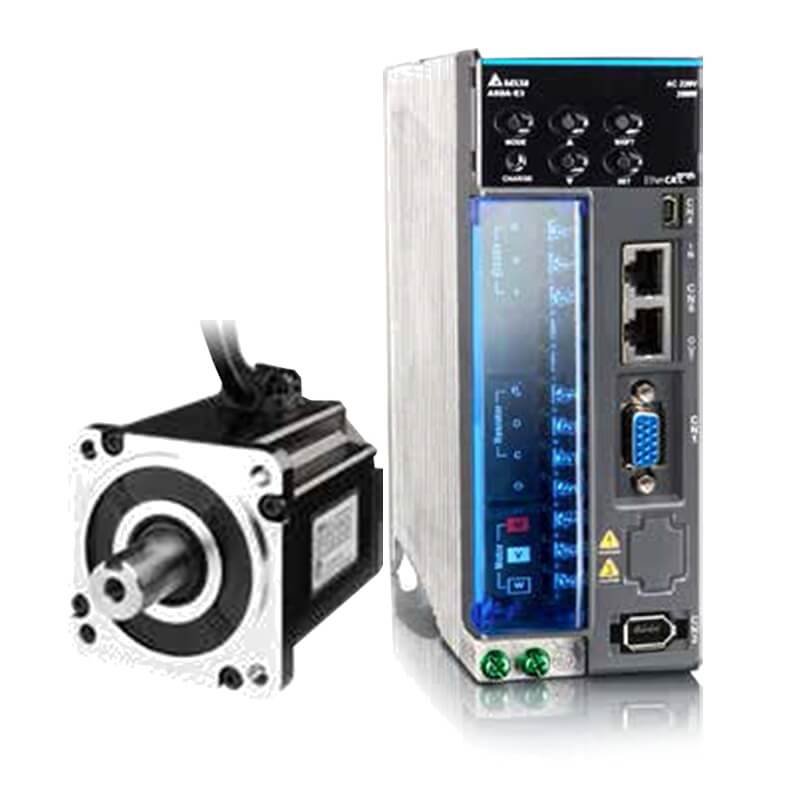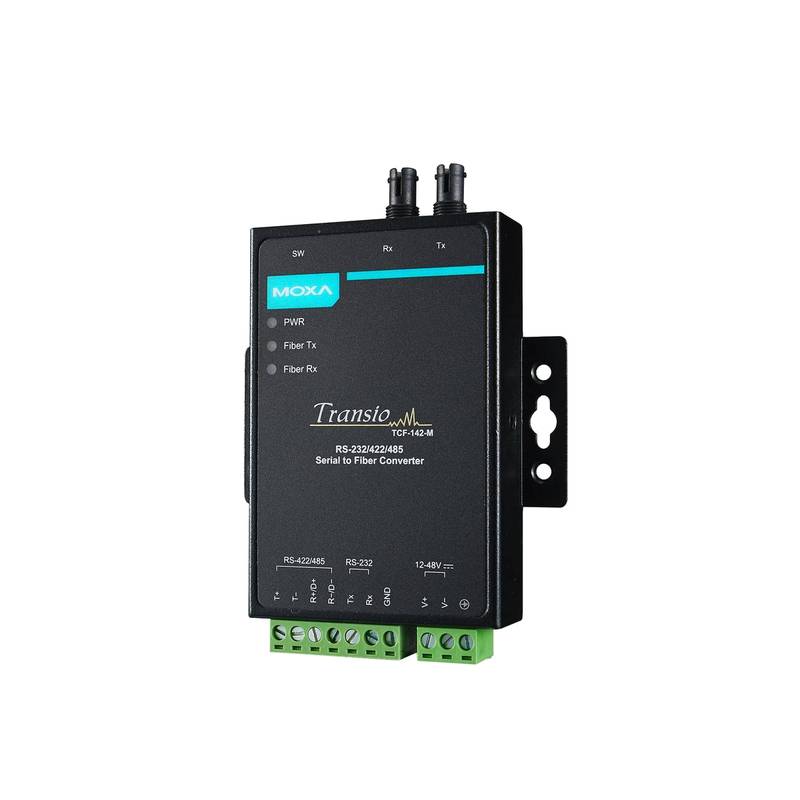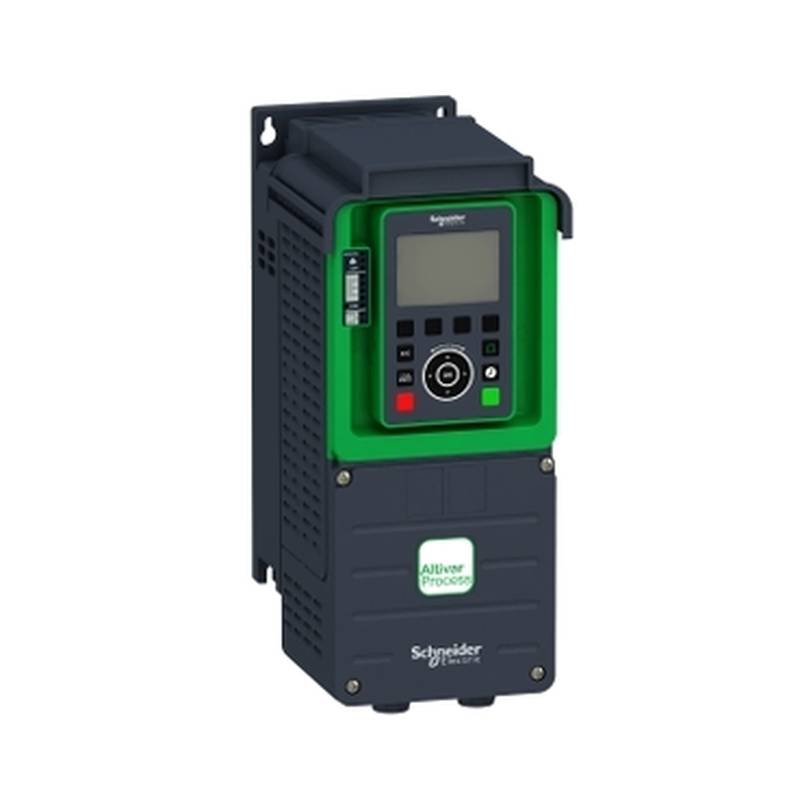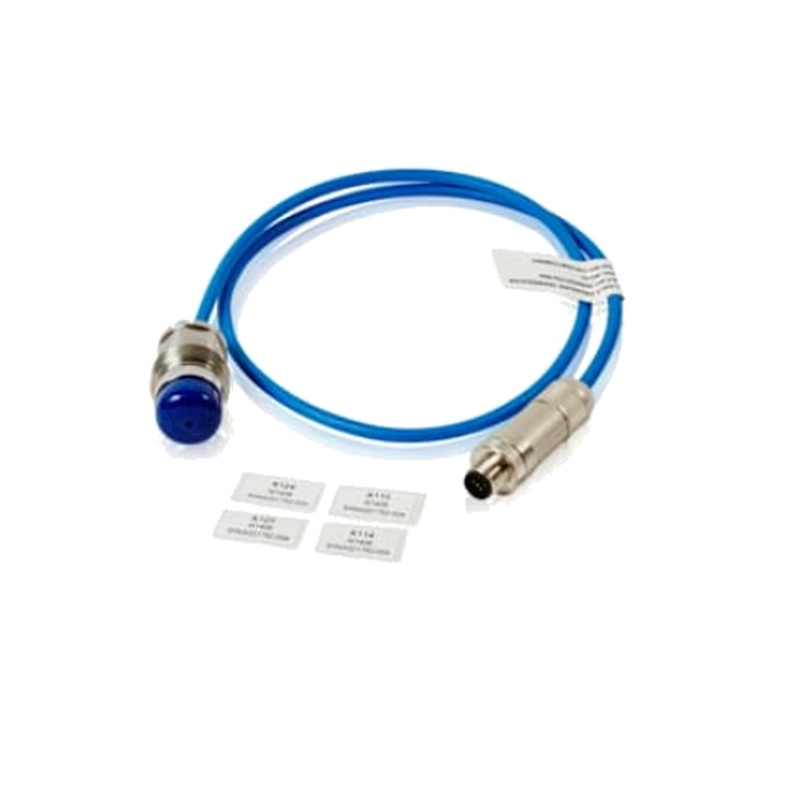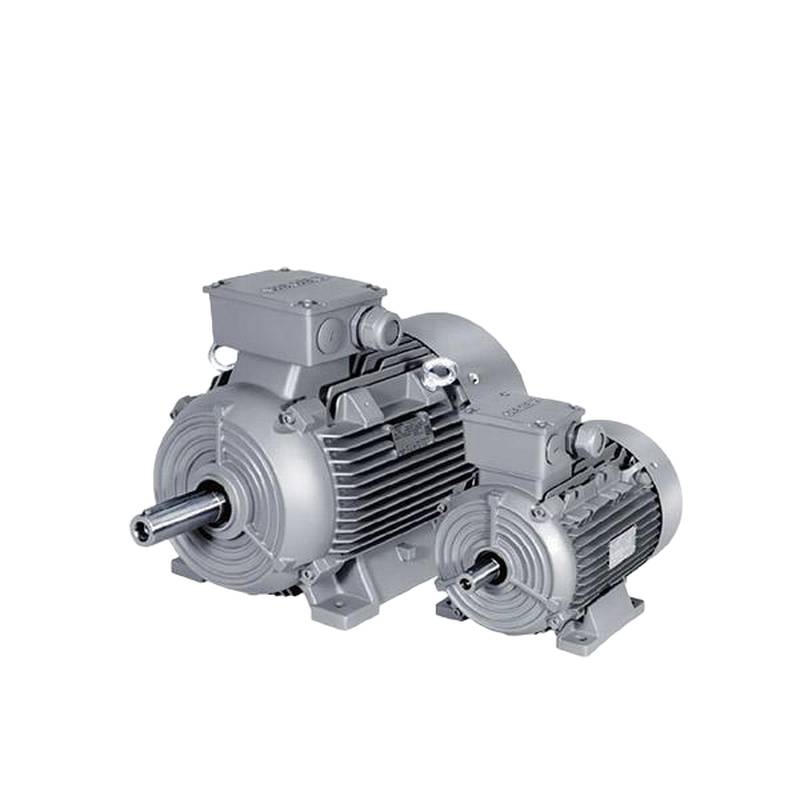
The Delta AS16AN01R-A 16-point Medium Capacity Relay Output Module stands as a robust and versatile component for industrial automation, engineered to deliver reliable control across a spectrum of demanding applications. This module distinguishes itself through its high-density relay outputs, precision control capabilities, and seamless integration within Delta's automation ecosystem. Key advantages include its 16 independently controllable relay channels, a compact form factor, and robust construction designed for harsh industrial environments. Essential technical parameters highlight its operational voltage range, switching capacity, and response times, crucial for designing efficient and dependable control systems.
Product Specifications
| Feature | Specification |
| :--------------------- | :--------------------------- |
| Product Name | AS16AN01R-A |
| Manufacturer | Delta |
| Module Type | Relay Output Module |
| Number of Points | 16 |
| Output Type | Relay |
| Capacity | Medium |
| Voltage Rating | 250 VAC / 30 VDC (Max) |
| Current Rating | 2A per point / 8A total (Max) |
| Response Time | Typically <10 ms |
| Isolation | Photocoupler isolation |
| Operating Temperature | 0°C to 55°C |
| Dimensions (W x H x D) | Varies by specific series, consult datasheet |
Core Features & Market Positioning
The Delta AS16AN01R-A distinguishes itself in the competitive industrial automation market through its high-density 16-point relay configuration, offering substantial control output within a compact footprint. This density reduces panel space requirements and wiring complexity, a significant advantage for system integrators and machine builders facing space constraints. Its robust relay contacts are rated for common industrial voltages and currents, ensuring broad compatibility and long operational life, a critical factor for machinery operating under continuous duty cycles. The module's inherent electromechanical switching provides excellent isolation between the control circuit and the load, safeguarding sensitive PLC inputs. This positions the AS16AN01R-A as a cost-effective and reliable solution for general-purpose output control where electrical isolation and moderate power handling are paramount, differentiating it from solid-state alternatives in applications requiring higher inductive load switching or where a simple, proven switching technology is preferred.
Key Application Scenarios
The versatility of the Delta AS16AN01R-A 16-point Medium Capacity Relay Output Module makes it indispensable across a variety of industrial sectors. In manufacturing, it serves as a primary interface for actuating pneumatic valves, controlling conveyor belts, and managing motor starters for moderate-power equipment. Within the food and beverage industry, its reliable switching capabilities are utilized for controlling pumps, agitators, and heating elements, where its medium capacity is well-suited for intermittent or continuous operation. For building automation systems, the AS16AN01R-A can manage lighting circuits, HVAC components, and access control mechanisms, offering straightforward integration and dependable performance. Its application extends to packaging machinery, where precise control of solenoids, diverter gates, and labeling equipment is essential for efficient operation.
Practical System Integration Guidance
Integrating the Delta AS16AN01R-A module into an industrial control system demands careful attention to wiring and configuration to ensure optimal performance and safety. Installation typically involves mounting the module onto a standard DIN rail within a control panel. Wiring the output channels requires connecting the common terminal for each group of relays to the appropriate power source (AC or DC, as specified) and then connecting the individual normally open (NO) or normally closed (NC) contacts to the field devices. It is imperative to adhere strictly to the voltage and current ratings for each relay point and the total module current to prevent overload and premature failure. When connecting to a Delta PLC or other compatible controller, the module's input signals must be correctly mapped in the PLC programming software, often using ladder logic or structured text to define the output behavior based on control logic. Ensure proper grounding of the module and associated power supplies to mitigate electrical noise and enhance system stability.
Operation and Risk Mitigation
Operating the Delta AS16AN01R-A module effectively hinges on understanding its electromechanical nature and adhering to best practices for industrial controls. Each relay operates by a coil energized by the PLC output signal, which in turn closes or opens a set of contacts to switch the external load. The primary risk associated with relay modules is contact wear over time, especially under heavy inductive or resistive loads, which can lead to intermittent operation or complete failure. To mitigate this, it is crucial to select relays with adequate contact ratings that exceed the expected load requirements and to consider using snubber circuits or arc suppression for inductive loads to reduce contact arcing and extend lifespan. Regular visual inspection for signs of overheating or damage, along with periodic functional testing of output channels, is recommended as part of a preventive maintenance schedule. Fault codes specific to the AS16AN01R-A are typically not indicated directly by the module itself; instead, PLC diagnostic functions will report an output failure if the controller detects an anomaly, such as an open circuit or short when attempting to energize or de-energize an output.
Scalability & Long-Term Value
The Delta AS16AN01R-A 16-point Medium Capacity Relay Output Module offers significant long-term value through its inherent compatibility within the broader Delta automation portfolio and its straightforward integration capabilities. As industrial processes evolve, the ability to expand control capacity is paramount. This module can be easily added to existing Delta PLC systems by utilizing available I/O expansion slots or by connecting additional communication modules, allowing for a scalable increase in the number of controlled outputs without requiring a complete system overhaul. Its standard communication protocols ensure interoperability with various Delta HMIs and SCADA systems, facilitating seamless data exchange for monitoring and advanced control strategies. For facilities looking to adopt Industry 4.0 principles, the AS16AN01R-A can be integrated into IIoT platforms by linking it with intelligent gateways or data acquisition systems, enabling remote monitoring, predictive maintenance, and optimized operational efficiency. The robust design and readily available support for Delta products ensure a long operational life and readily available replacement parts, minimizing downtime and maximizing return on investment.
Frequently Asked Questions
What is the maximum switching current for the Delta AS16AN01R-A?
The Delta AS16AN01R-A module features a maximum switching current of 2A per individual relay point. This rating is essential for ensuring the longevity and reliability of the contacts when controlling external devices.
It is also important to note the total current capacity of the module, which is typically limited to 8A across all channels combined. Exceeding this total limit can lead to overheating of the module's internal circuitry.
Always consult the official datasheet for the most precise specifications, as environmental factors and specific load types can influence the effective current handling capabilities.
How do I wire the Delta AS16AN01R-A relay output module?
Wiring begins by mounting the module on a DIN rail and connecting the common terminals for each group of relays to the appropriate AC or DC power source. The individual output contacts, typically labeled NO (Normally Open) and NC (Normally Closed), are then wired to your external devices.
Ensure that the voltage and current requirements of your loads are within the specified limits of the AS16AN01R-A's relay contacts to prevent damage. Incorrect wiring can lead to short circuits or equipment failure.
Refer to the wiring diagrams provided in the module's manual for specific terminal designations and recommended wiring practices, especially when dealing with mixed AC/DC loads or high-frequency switching applications.
Can the Delta AS16AN01R-A be used with PLCs from other manufacturers?
Yes, the Delta AS16AN01R-A is designed with standard industrial interfacing, making it compatible with many PLCs from other manufacturers, provided they offer compatible digital output signal levels and wiring configurations.
The key is to ensure that the voltage and current signals from the foreign PLC's output module can properly energize the relay coil of the AS16AN01R-A. Conversely, the status of the relay contacts should be recognizable by the PLC's input modules.
Always verify the electrical interface specifications of both the PLC and the AS16AN01R-A. It is also advisable to check for any specific compatibility notes or recommended configurations from either the PLC vendor or Delta in complex integration scenarios.
What are the typical response times for the Delta AS16AN01R-A?
The Delta AS16AN01R-A relay output module typically exhibits response times of less than 10 milliseconds for both energizing and de-energizing the relay coil. This rapid switching capability is crucial for applications requiring precise timing and quick reaction to control signals.
This fast response time is characteristic of electromechanical relays and is suitable for a wide array of standard industrial control tasks. For extremely high-speed applications, alternative solid-state output modules might be considered, although they often have different isolation characteristics.
The actual response time can be influenced by factors such as the voltage supplied to the relay coil and the overall system response of the connected PLC. However, the inherent switching speed of the relay itself remains a key performance metric.
How does the Delta AS16AN01R-A provide electrical isolation?
The Delta AS16AN01R-A achieves electrical isolation primarily through the use of photocouplers. These devices use light to transmit signals between the PLC's low-voltage control circuit and the higher-voltage or noisier industrial load circuit.
This optocoupler-based isolation effectively separates the input and output sides of the module, preventing ground loops and protecting the PLC from voltage transients or surges originating from the controlled equipment. This is a fundamental safety and reliability feature in industrial automation.
The physical separation of the relay contacts also provides a degree of isolation, but the photocoupler ensures that even the control signal path is electrically insulated, which is critical for system integrity and operator safety.
What is the operating temperature range for this module?
The Delta AS16AN01R-A is designed to operate reliably within an ambient temperature range of 0°C to 55°C. This range covers most standard industrial operating environments encountered in factory settings.
Operating the module outside of this specified temperature range can lead to performance degradation, reduced lifespan, or outright failure. Extreme heat can cause components to overheat, while extreme cold can affect mechanical or electrical properties.
It is essential to ensure adequate ventilation within the control panel where the module is installed, especially when multiple modules or high-power devices are present, to maintain temperatures within the acceptable limits and ensure optimal operation.
How can I perform basic troubleshooting on the Delta AS16AN01R-A?
Begin troubleshooting by verifying the power supply to the module and ensuring it is within the specified voltage range. Then, check the control signals from the PLC; confirm that the PLC is sending the correct output signal to energize the relay coil.
Visually inspect the wiring connections for any loose or damaged wires, and ensure all terminals are securely fastened. If a specific output channel is not functioning, test it directly by applying a known good control signal to its coil.
If the issue persists, consider the load itself; disconnect the load and test the relay contacts with a multimeter to check for continuity when energized and open circuit when de-energized. If the relay contacts fail, the module may need replacement.
What is the difference between Normally Open (NO) and Normally Closed (NC) contacts on this module?
Normally Open (NO) contacts are open circuits when the relay coil is de-energized, meaning they do not allow current to flow. When the relay coil is energized by the PLC, these contacts close, completing the circuit and allowing current to pass through to the connected device.
Normally Closed (NC) contacts are closed circuits when the relay coil is de-energized, allowing current to flow. When the relay coil is energized, these contacts open, interrupting the circuit and stopping the flow of current to the connected device.
The choice between NO and NC depends on the desired fail-safe state of the controlled equipment. For example, an emergency stop button would typically use NC contacts to break power when pressed.
Can this relay module handle inductive loads like motors or solenoids?
Yes, the Delta AS16AN01R-A relay module can handle inductive loads, but it is crucial to operate within its specified current and voltage limits. Inductive loads generate voltage spikes (back EMF) when switched off, which can damage relay contacts.
To protect the relay contacts and extend the module's lifespan when switching inductive loads, it is highly recommended to use appropriate arc suppression or snubber circuits across the load or directly across the relay contacts. Common methods include using flyback diodes for DC loads or RC snubber circuits for AC loads.
Always consult the module's datasheet for specific recommendations on handling inductive loads and ensure the selected suppression method is adequate for the size and type of inductive device being controlled.
What are the benefits of using a medium capacity relay output module like the AS16AN01R-A?
Medium capacity relay output modules offer a balance of power handling and cost-effectiveness for a broad range of industrial applications. They can switch moderate currents and voltages, making them suitable for controlling common actuators like solenoid valves, motor starters, and contactors.
Their electromechanical nature provides excellent electrical isolation, which is vital for protecting sensitive PLC electronics from load-side disturbances. This robust isolation is often a key advantage over solid-state outputs in certain environments or for specific load types.
Furthermore, the tactile and audible feedback from a relay operation can be beneficial for maintenance personnel during troubleshooting and commissioning, providing a clear indication that the relay is attempting to switch. Their simplicity and reliability also contribute to long-term operational value.
















